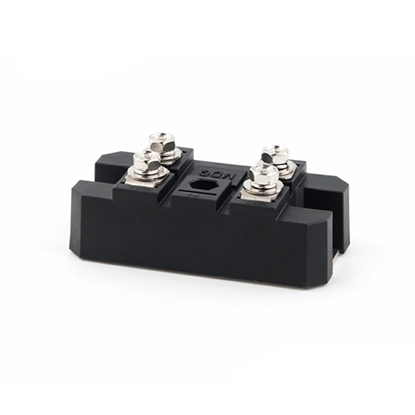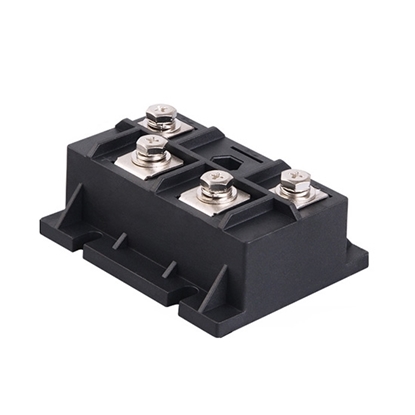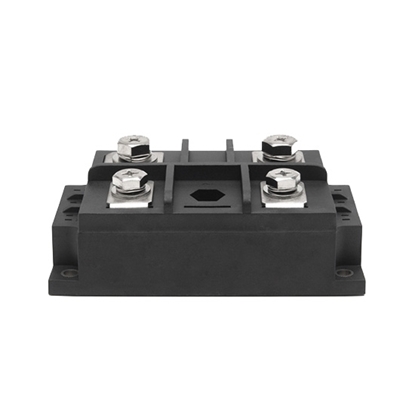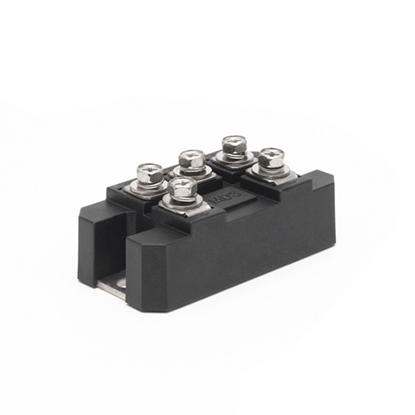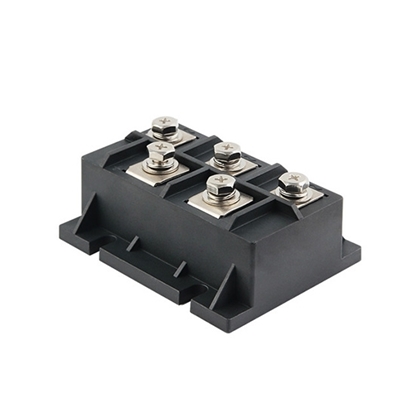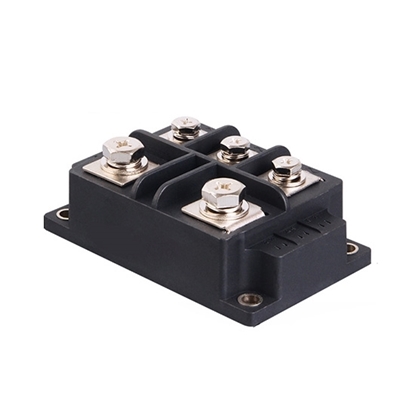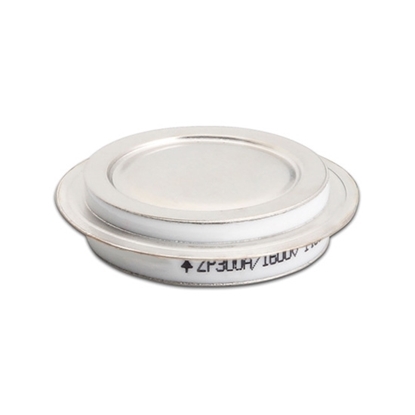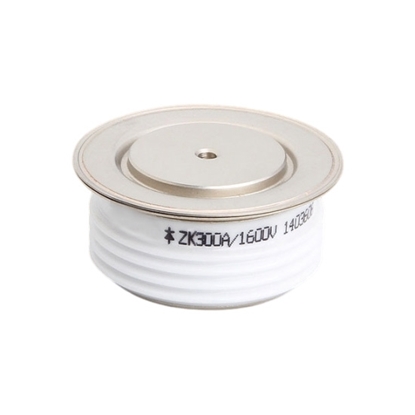Rectifier
Portable Single Phase Bridge Rectifier Module, 60/75/100 Amp
Single Phase Diode Bridge Rectifier Module, 150/200/250 Amp
High Power Single Phase Bridge Rectifier Module, 300/400 Amp
Portable Three Phase Bridge Rectifier Module, 60/75/100 Amp
Three Phase Diode Bridge Rectifier Module, 150/200/250 Amp
High Power Three Phase Bridge Rectifier Module, 300/400 Amp
High Power Rectifier Diode, 300/500/800/1000 Amp
Fast Recovery Rectifier Diode, 300/500/800/1000 Amp
A rectifier is an electronic device designed to convert alternating current (AC) into direct current (DC). It operates by utilizing the unidirectional conductivity of diodes or other rectifying elements to change the periodic direction of AC into a steady DC flow. This process involves blocking the negative half-cycles of AC and allowing only the positive half-cycles to pass through, resulting in a DC output. Rectifiers are essential in various applications, such as power adapters, battery chargers, and power supply systems, where they provide stable DC power for electronic devices and electrical systems.
Types of Rectifiers
Rectifiers can be classified based on various criteria, including their configuration, the number of phases they handle, and their control mechanisms. Here’s a detailed classification:
Based on Configuration
- Half-Wave Rectifier: A half-wave rectifier uses a single diode to convert AC into DC, allowing only one half-cycle of the AC waveform to pass through. It is a simple and cost-effective design but is less efficient as it only utilizes half of the AC signal, resulting in a DC output with significant ripple and lower average voltage.
- Full-Wave Rectifier: A full-wave rectifier uses either two diodes with a center-tap transformer or four diodes in a bridge configuration (bridge rectifier) to convert both half-cycles of the AC signal into DC. This design improves efficiency by utilizing the entire AC waveform, producing a smoother DC output with reduced ripple compared to half-wave rectifiers.
Based on Number of Phases
- Single-Phase Rectifier: A single-phase rectifier is designed to handle single-phase alternating current (AC) and convert it into direct current (DC). It typically comes in two main configurations: half-wave and full-wave rectifiers.
- Three-Phase Rectifier: A three-phase rectifier is designed to handle three-phase AC power, typically using six diodes arranged in a specific configuration to rectify the AC signal into DC. This type of rectifier provides a very stable and smooth DC output, making it suitable for high-power industrial applications where a consistent power supply is crucial.
Based on Control Mechanism
- Uncontrolled Rectifier: An uncontrolled rectifier relies on passive components like diodes that automatically perform rectification without external control. It is simple and reliable, but lacks the ability to adjust the rectification process, making it suitable for applications where variable control of the output is not necessary.
- Controlled Rectifier (e.g., Silicon Controlled Rectifier-SCR): A controlled rectifier, such as a Silicon Controlled Rectifier (SCR), features active components that can be controlled to regulate the timing and amount of current flowing through the device. This allows for precise control of power delivery and is commonly used in applications like motor speed controls and light dimmers, where adjustable power output is required.
Based on Application
- Precision Rectifier A precision rectifier uses operational amplifiers (op-amps) in conjunction with diodes to achieve highly accurate rectification, especially for low-voltage and low-current signals. It is designed to provide very precise DC output with minimal voltage drop, making it ideal for signal processing applications requiring high accuracy.
- Capacitor-Coupled Rectifier: A capacitor-coupled rectifier incorporates capacitors to filter and smooth the rectified output, reducing ripple and producing a more stable DC voltage. This type of rectifier is commonly used in power supplies to improve the quality of the DC output, ensuring a steady and reliable power source for electronic devices.
Common Components of Rectifiers
Diodes: Diodes are crucial components in rectifiers, allowing current to flow in only one direction. This unidirectional conduction is essential for converting alternating current (AC) into direct current (DC). Common types of diodes used in rectifiers include silicon diodes, which are standard for general-purpose applications, and Schottky diodes, known for their low forward voltage drop and high switching speed.
Capacitors: Capacitors are employed in rectifier circuits to filter the pulsating DC output, smoothing out the ripple and providing a stable DC voltage. They store and release electrical energy to reduce voltage fluctuations. Electrolytic capacitors are commonly used for this purpose due to their high capacitance and effectiveness at filtering low-frequency ripples.
Inductors: Inductors are used in conjunction with capacitors to further smooth and filter the rectified DC output. They help reduce high-frequency ripple and noise by storing energy in a magnetic field and releasing it gradually. Inductors, such as chokes, are particularly useful in power supply circuits to enhance the quality of the DC signal.
Resistors: Resistors are used in rectifier circuits to manage current flow, balance voltage levels, and stabilize operation. They can limit the amount of current passing through various components or adjust signal levels. Fixed resistors are commonly used, but variable resistors (potentiometers) may be employed for tuning and adjustment purposes.
Silicon Controlled Rectifiers (SCRs): Silicon Controlled Rectifiers (SCRs) are used in controlled rectifier circuits where precise control over the rectification process is needed. SCRs can be triggered to conduct current at specific times, allowing for control of power delivery in applications like motor speed regulation and light dimming.
Fuses: Fuses provide overcurrent protection in rectifier circuits by breaking the circuit when excessive current flows. This prevents damage to the rectifier components and the overall circuit. Fuses are selected based on their current and voltage ratings to match the requirements of the rectifier system.
Heat Sinks: Heat sinks are used to dissipate heat generated by power components, such as diodes and transistors, in rectifier circuits. They enhance thermal management by increasing the surface area available for heat dissipation, preventing overheating and ensuring reliable operation of the rectifier. Heat sinks come in various designs and sizes depending on the power requirements.

